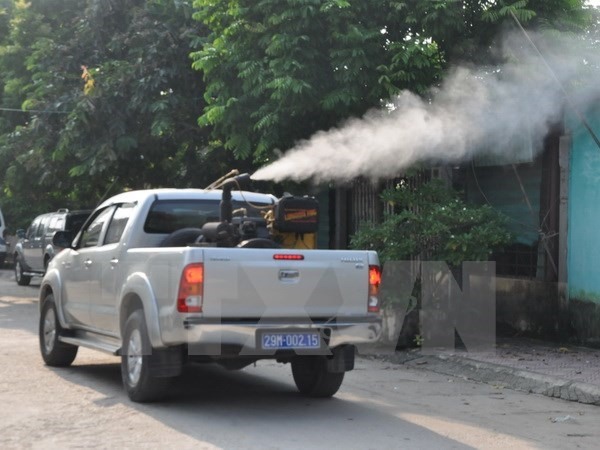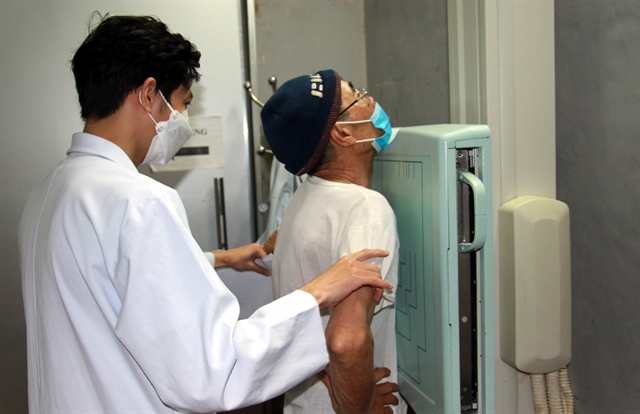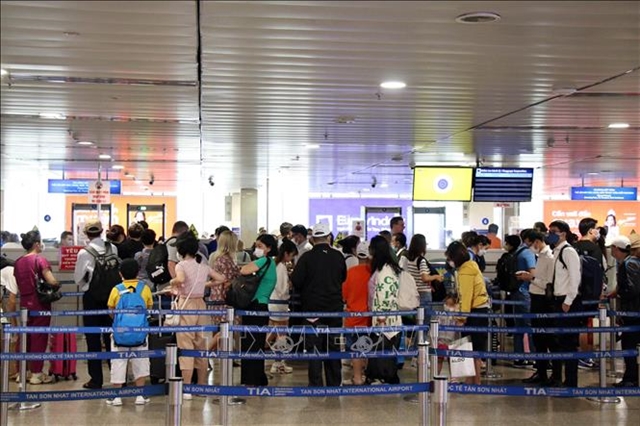 Society
Society

According to the Hà Nội Preventine Medicine Centre, from the beginning of the year, some diseases like whooping cough, measles, rubella, dengue fever, and streptococcal infection have seen a trend of increased occurrence in the city.
 |
| Spraying chemical to kill off mosquitoes, the vector of dengue fever and other mosquito-borne diseases, in Hoài Đức District. — VNA Photo |
HÀ NỘI — From the beginning of the year, diseases such as whooping cough, measles, rubella, dengue fever and streptococcal infection have witnessed a trend of increased occurrence in the city, the Hà Nội Preventive Medicine Centre has reported.
In the first quarter of 2017, the city registered 438 cases of dengue fever, a dramatic increase of 44 per cent compared with the same period last year; however, no deaths occurred.
Dengue fever patients were scattered across 153 communes and wards of 24 districts (out of a total of 29 urban and outlying districts). Such dispersed bursts of diseases have been successfully contained to prevent further outbreaks, the centre said.
Hoàng Đức Hạnh, deputy head of the municipal Department of Health, has asked the Hà Nội Preventive Medicine Centre and other agencies under the health department to carry out more robust efforts to combat the rise of summer’s common diseases in general and dengue fever in particular.
The centre in collaboration with districts and towns in the city has maintained a well-organised system of infection surveillance, with stations that receive and handle information on infections. A mobile team is also in place and put on ready position at the centre and other localities to promptly respond to infectious disease threats, the centre said.
However, according to the centre, irregular availability of manpower reserved for preventing outbreaks and the fact that some employees tasked with rabies and dengue fever response have not specialised in epidemiology are some of the limitations hindering the effectiveness of prevention efforts.
In addition, a software solution that aids prevention has not been deployed in 60 per cent of medical centres in the city, while those centres that have deployed the software have not put much effort in updating their database in a timely manner. — VNS








